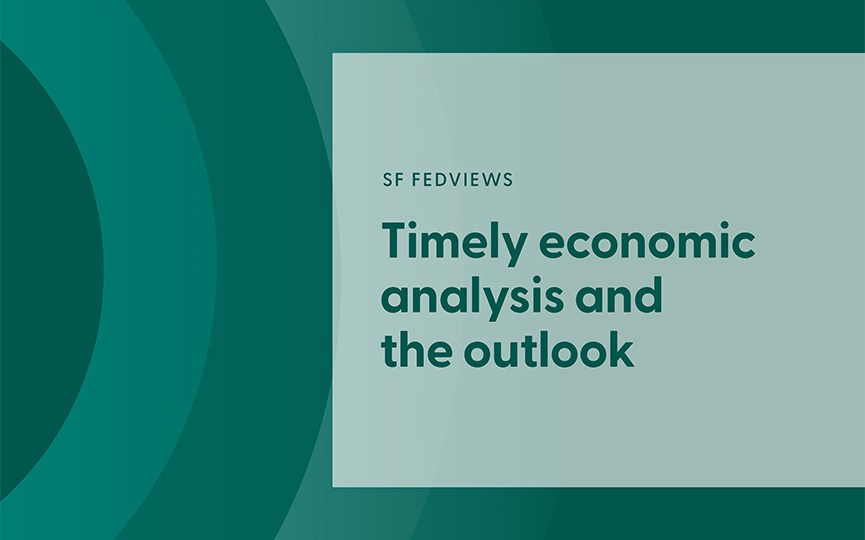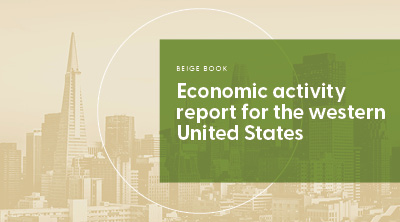We produce a wide range of publications that share the latest data, analysis, and insights from various teams at the SF Fed. Our publications help inform and strengthen public understanding of economic issues and its impact on people and communities.
Economic Research Publications
FRBSF Economic Letter >
Economic analysis for general audiences
-

The Ups and Downs of Household Income
Changes in overall economic conditions may affect real household income levels and also how income is distributed across households. Analysis using annual data from 1967 to 2023 shows that the adverse effects of unemployment and inflation have been generally uniform across the household income distribution. However, the pandemic recession showed a different pattern: Historically large government transfers via enhanced unemployment insurance benefits largely offset the adverse economic effects of surging unemployment for lower-income households. Results also show that sustained economic expansions have beneficial effects, especially for lower-income households.
SF FedViews >
Analysis of current economic developments and the outlook
-

SF FedViews: March 6, 2025
Mark M. Spiegel, senior policy advisor at the Federal Reserve Bank of San Francisco, stated his views on the current economy and the outlook as of March 6, 2025.
Working Papers >
The latest in economic research
-

Supply Constraints Do Not Explain House Price and Quantity Growth Across U.S. Cities
The standard view of housing markets holds that the flexibility of local housing supply—shaped by factors like geography and regulation—strongly affects the response of house prices, house quantities and population to rising housing demand. However, from 2000 to 2020, we find that higher income growth predicts the same growth in house prices, housing quantity, and population regardless of a city’s estimated housing supply elasticity. We find the same pattern when we expand the sample to 1980 to 2020, use different elasticity measures, and when we instrument for local housing demand. Using a general demand-and-supply framework, we show that our findings imply that constrained housing supply is relatively unimportant in explaining differences in rising house prices among U.S. cities. These results challenge the prevailing view of local housing and labor markets and suggest that easing housing supply constraints may not yield the anticipated improvements in housing affordability.
Community Development Publications
Community Development Research Briefs >
Research Briefs feature data and commentary on community development trends and issues.
-
Homeownership Opportunities Beyond Single-Family: Quantifying the Current Landscape
Although homeownership is commonly portrayed as a single household living in a detached house, homeownership in the U.S. includes an array of opportunities, some of which provide more affordable entry points into owning a home.
Community Development Working Papers >
Working papers provide in-depth analysis of emerging community development issues from practitioners and scholars.
-
Housing Market Interventions and Residential Mobility in the San Francisco Bay Area
Limited evaluation research exists on which housing solutions are most effective in stabilizing communities so that those who wish to stay are able to do so in the midst of an influx of newcomers. This study seeks to fill this gap by assessing patterns of individual and household mobility related to specific housing interventions in the nine-county San Francisco Bay Area. Specifically, this study examines impacts of market-rate and subsidized development, and tenant protections, including rent stabilization and just cause for evictions protections.



